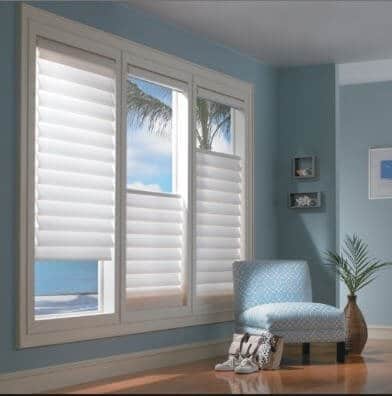Your Journey to a Beautiful Home Starts at Sunshine Drapery
Receive a complimentary professional in-home design consultation today!

Two of the most popular types of shades, roman, and honeycomb, are alike in many ways. Both types of shades form a single wall of fabric when lowered, as opposed to the many horizontal or vertical slats used by other types of shades. Both types of shades work well for tall or hard-to-reach windows, and the translucency of both types of shades is decided by selecting thin or sheer fabrics rather than by mechanical means. A lot of people have the impression that honeycomb shades (also known as cellular shades) are not as stylish as roman shades. While it’s true that roman shades are more traditional, honeycomb shades have the potential to be very stylish when used in combination with other modern design elements and can contribute to a clean, minimalistic style. As with any style choice, there isn’t a clear answer as to whether one of these options is better than the other. However, there are a variety of factors worth considering that can help you to decide which variety of window treatment works best for you and your home.
)
Receive a complimentary professional in-home design consultation today!